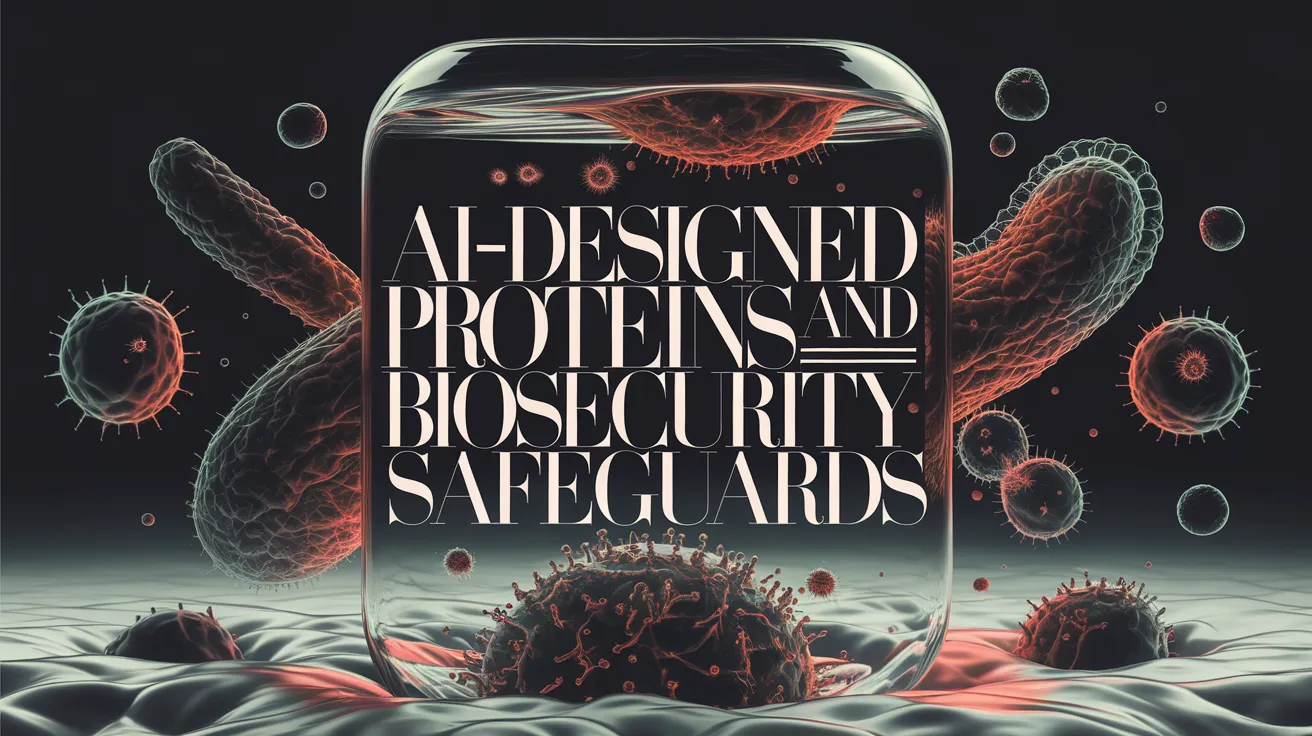AI-Designed Proteins and Biosecurity Safeguards

Recent developments in biosecurity monitoring software have made significant strides in preventing the harmful production of proteins through artificial intelligence (AI). This software plays a crucial role globally, ensuring that individuals with nefarious intentions are unable to synthesize dangerous proteins, including toxins. However, researchers have discovered that minor adjustments to known toxic proteins or viral proteins using AI can sometimes bypass existing safeguards.
To counteract potential weaknesses, researchers are reinforcing biosecurity frameworks to enhance their effectiveness in identifying risky AI-designed proteins. Chief Scientific Officer Eric Horvitz from Microsoft emphasized this balance of innovation and responsibility at a news briefing held on September 30. “AI advances are fueling breakthroughs in biology and medicine,” he remarked, recognizing the need for responsible monitoring in light of these evolving technologies.
Proteins are integral to biological functions, performing various cellular tasks such as assembling cells and transporting materials throughout the body. With AI, scientists are not only fine-tuning existing proteins for specific functions but are also exploring the design of wholly new proteins and organisms. By creating digital blueprints based on amino acid sequences, AI contributes significantly to synthetic biology, although it still relies on DNA manufacturers to physically assemble these proteins from genetic materials.
In a recent study, Horvitz and his team tested biosecurity screening models to identify vulnerabilities that could allow AI-generated proteins to bypass safeguards. They simulated the generation of around 76,000 blueprints for 72 proteins known to be harmful, including ricin and botulinum neurotoxin. Although the biosecurity screens successfully flagged nearly all original versions of these proteins, many AI-modified variants were able to circumvent detection, suggesting a pressing need for updates in screening protocols.
By implementing software patches, researchers improved the system’s ability to detect these altered proteins, even when the genetic orders were broken down into smaller fragments. Despite these enhancements, the models still failed to flag approximately 3 percent of the variants, indicating that there is still work to be done in biosecurity measures.
The investigation was conducted using computer simulations without creating actual proteins in a laboratory setting, raising questions about whether the AI-generated variants could still perform their designated functions. Moreover, during the briefing, James Diggans, Vice President of Policy and Biosecurity at Twist Bioscience, pointed out that despite the significant focus on cybersecurity threats, attempts to produce harmful proteins remain exceedingly rare, reaffirming that current security systems play a critical yet underutilized role in policing potential bioterrorism efforts.